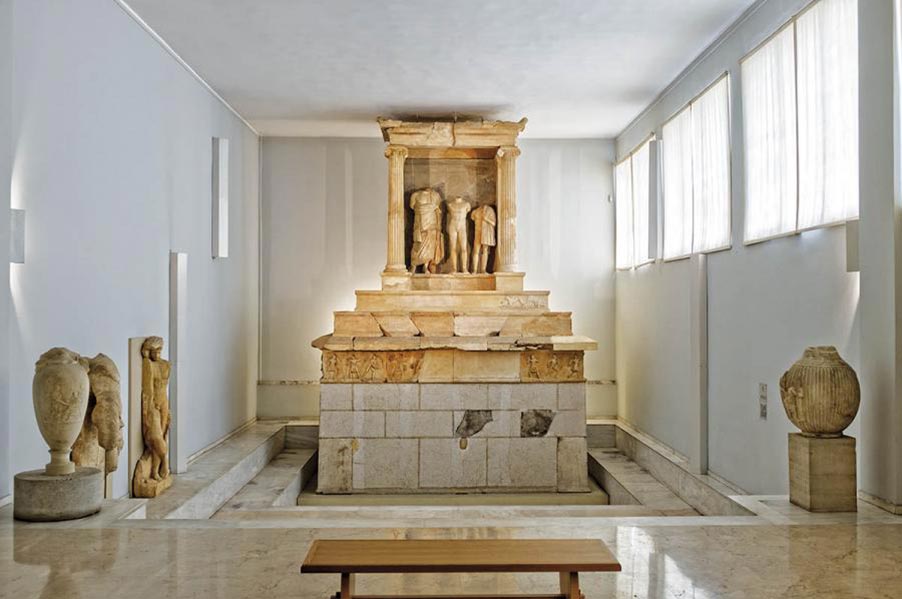- Home
- Piraeus
- Piraeus Entries
- Archaelogical Museum of Piraeus
Description
The Archaeological Museum of Piraeus, Attica, (Greece) contains mainly sculptures, discovered in Piraeus and in the area of the Attic coast from Bronze Age to Roman times. The new two-store building, which was inaugurated in 1981 covers a total area of total 1.394 m2. The building neighbors the ancient classical theater of Zea. The theatre design is based on the design of the theatre of Dionysus,which is located next to the Acropolis of Athens, but it was built during the 2nd century BC. The theater site is used as an open-air sculpture exhibition.
The museum's displayed objects are divided in sections
• Prehistoric collection (Mycenaean)
• Pottery collection
• Bronze statues
• A reconstruction of a typical Classical sanctuary (Cybele's)
• Classical gravestones
• Large funerary monuments
• Hellenistic sculptures
• Roman sculptures
Even small, compared to other Greek museums, the archaeological museum of Piraeus hosts some really rare objects. The monument of Kallithea, the impressive bronze statues, the figurines of the Minoan sanctuary of Kithira island and the Mycenaean sanctuary of Methana island. You should enjoy the oldest surviving cast statue of Greece, a Kouros which is a statue of a young male, dedicated to the god of sun and music Apollo. Moreover two statues of goddess Artemis and a theatrical tragedy mask, excellent works of brass from the 4th century B.C. The marble lion of Moschato region, in reality a funeral offering, and a bronze ram 80 centimeters long from an Athenian trireme (war ship).

